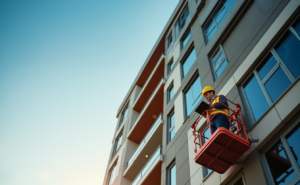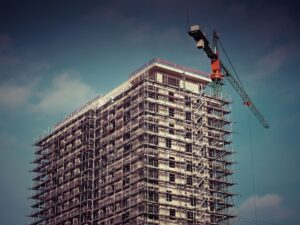Understanding the concept of demised premises, when it comes to owning a residential flat in the UK, is crucial, to ensure you have a firm grasp of what areas you are and are not responsible for. In this comprehensive Strangford Management guide, we will explore the meaning, importance, and various aspects of demised premises in a residential lease, ensuring that you have all the information you need when entering into a lease agreement.
1. What are defined as Demised Premises?
1.1 Definition
The term “demised premises” refers to the specific area of a property that is leased or rented to a leaseholder under a lease. This area is explicitly defined in the lease and outlines the physical boundaries of the property being leased or transferred. Essentially, it describes what is and what is not part of the property owned under the terms of the lease.
1.2 Importance
Clearly defining the demised premises in a lease is essential for both the leaseholder and the landlord. It helps to avoid misunderstandings, trespassing situations, or abuses that may arise due to confusion over property boundaries. Moreover, the concept plays a significant role in determining the responsibilities and obligations of both parties concerning repairs, maintenance, alterations, and other aspects of the property.
2. Residential Leases
2.1 Residential vs. Commercial Leases
The concept is commonly used in both residential and commercial leases. However, the term is more frequently found in commercial leases, while residential leases and rental agreements often use definitions like “property,” “premises,” or “leased premises,” followed by an address or short description of the property.
2.2 Components of Demised Premises
In a residential lease, the demised premises typically include everything within the four walls of the property, such as the floorboards, plaster to walls and ceilings, and even internal fixtures and fittings. However, it generally does not encompass the external or structural walls, communal areas, or shared facilities within the building, such as staircases, lobbies, or gardens.
3. Why are Demised Premises Important in a Lease?
3.1 Distinguishing Between Leaseholder and Landlord Responsibilities
The demised premises serve to distinguish between the areas that the leaseholder is permitted to occupy and those retained by the landlord. By clearly outlining which parts of the property the leaseholder is responsible for, the lease helps to resolve disputes and confusion over who is responsible for repairing and maintainance.
3.2 Preventing Trespassing and Misuse
By explicitly defining the boundaries, the lease helps prevent situations where the leaseholder may inadvertently trespass or misuse areas that are not part of their property. This is particularly important in apartment buildings and other multi-unit properties, where there may be shared spaces and facilities that need to be accessed and maintained by multiple tenants.
4. Identifying Demised Premises in a Lease
4.1 Description and Address
The demised premises are typically identified in the lease by a description and an address. This may be as simple as stating the specific unit or apartment number within a building, or it may involve a more detailed description that includes the location and extent of the property, as well as any additional rights and associated responsibilities.
4.2 Use of Plans and Maps
In some cases, particularly for larger or more complex properties, a plan or map may be used to identify the demised premises. This can help to provide a clearer and more accurate representation of the property boundaries, ensuring that there is no confusion or ambiguity.
5. Leasehold Ownership
5.1 Leasehold Interest
In the UK, leasehold ownership refers to a leaseholder’s rights in a property for a specified period, as defined by the lease. The leasehold interest generally covers the demised premises and any associated rights and obligations, such as access to shared facilities or responsibility for repairs and maintenance.
5.2 Leasehold vs. Freehold
Leasehold ownership is distinct from freehold, which refers to the outright ownership of a property and the land on which it stands. In a leasehold arrangement, the landlord retains the freehold interest in the property, granting the leaseholder a leasehold interest for the duration of the lease.
6. Rights and Responsibilities Associated with Demised Premises
6.1 Leaseholder’s Rights and Obligations
Leaseholders have various rights and obligations associated, which are typically outlined in the lease agreement. These may include the responsibility to maintain and repair the demised premises, the right to use shared facilities, and the right to access the property.
6.2 Landlord’s Rights and Obligations
Similarly, landlords have rights and obligations relating to the property as a whole. These may include the responsibility to maintain and repair common areas and facilities, the right to inspect the demised premises, and the right to enforce the terms of the lease.
7. Resolving Disputes
7.1 Lease Clarity
A well-drafted lease can help prevent disputes by clearly defining the property boundaries and the rights and responsibilities of both parties. This can save time, effort, and potential legal costs associated with resolving misunderstandings or disagreements regarding the demised premises.
7.2 Mediation and Legal Resolution
In cases where disputes do arise, mediation or legal intervention may be necessary. Both leaseholders and landlords should seek professional advice from solicitors, surveyors, or other experts to help navigate the complex and often nuanced aspects of disputes.
8. Common Issues
8.1 Ambiguity in Lease Descriptions
One of the most common issues with demised premises is ambiguity in the lease description, which can lead to confusion and disputes over property boundaries and responsibilities. You can often avoid this by ensuring that the lease provides a clear and accurate description of the demised premises, including any associated rights and obligations.
8.2 Changes to Property Boundaries
Another common issue is changes to property boundaries or shared facilities over time. This can occur due to renovations, redevelopment, or other alterations to the property or surrounding area. In such cases, it may be necessary to revisit the lease and description to ensure that it accurately reflects the current state of the property.
9. Tips for Dealing with Demised Premises in a Lease
9.1 Seek Professional Advice
Before entering into a lease agreement, it is essential to seek professional advice from a solicitor, surveyor, or other property expert.
They can help ensure that the demised premises are clearly and accurately defined, minimizing the risk of disputes and misunderstandings down the line.
9.2 Review the Lease Thoroughly
Before signing a lease, both leaseholders and landlords should carefully review the demised premises description and associated rights and obligations. This can help to prevent future disputes and ensure that both parties are fully aware of their responsibilities.
10. Conclusion
In conclusion, understanding the concept of demised premises is crucial when entering into a residential lease in the UK. By ensuring that the demised premises are clearly and accurately defined, both leaseholders and landlords can enjoy a smoother experience, with fewer disputes and misunderstandings.
Remember you should seek professional advice and review the lease thoroughly to ensure that the demised premises and associated rights and obligations are fully understood and they are agreed upon by all parties involved.
Read more…
- EWS1 Form Explained: Hidden Requirements Your Surveyor Won’t Tell You
- NHBC Cover Explained: Your Essential Guide for Leaseholders (2025)
- Ministers Set £30bn Cladding Crisis Deadline for 2029
- Service Charge Disputes Made Simple: Your Rights as a Leaseholder
- Breaking: Leasehold Reform Scraps Two-Year Wait Rule From January 2025




